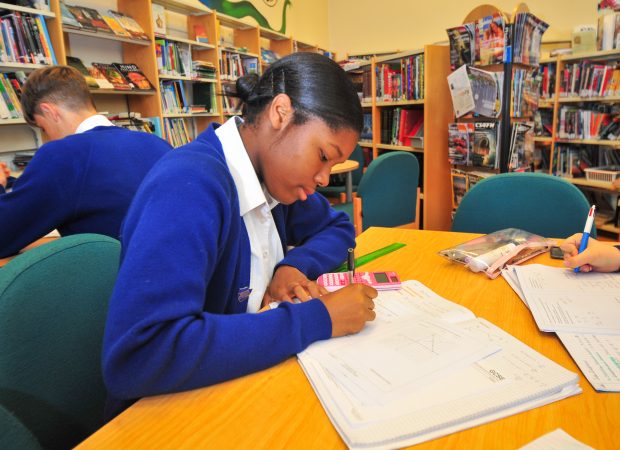
Daniel Muijs, our Deputy Director for Research and Evaluation, and Karl Sampson, Assistant Regional Director for the South West, discuss the role of multi-academy trusts during the COVID-19 pandemic.
The COVID-19 pandemic has tested the resilience of school staff more than anything we have recently experienced. The response from leaders, teachers and support staff has been truly admirable. During our autumn visits, we found many examples of excellent work, but also saw the challenges that leaders in particular had to deal with. Leaders in schools that were part of multi-academy trusts (MATs) told us that the support they received from their trust was invaluable. Unsurprisingly, this finding was of interest to the Confederation of School Trusts, who asked us to delve a bit deeper into the ways in which trusts are supporting their schools through the pandemic.
To do so, we asked some additional questions on the role of school trusts during our autumn visits to 80 schools that were part of a MAT. These include primary (42), secondary (30), special schools (6) and PRUs (2).
For the school leaders we spoke to, the support of their trust was crucial. They told us about support with safeguarding, interpreting COVID-19 guidelines, developing remote learning and integrating this with the curriculum. We weren’t able to verify this with our usual inspection activities, so the findings should be read with that in mind.
Safeguarding and COVID-19 guidelines
One thing school leaders valued was a strong trust-wide approach to managing risk assessment and planning. Many praised the work of MAT leaders, premises and estates managers and fellow headteachers in shaping their local response to national COVID-19 guidelines. Trusts supported their schools by helping them to manage social distancing and set up ‘bubbles’ as well as in reviewing safeguarding, attendance and behaviour policies so that new risks were accounted for and mitigated. Frequent communication from trust leaders helped keep schools up to date with the latest developments, and helped build the confidence of staff and the wider school community.
In most cases, this central support went hand-in-hand with a degree of local autonomy so school leaders could tailor policies to their own context. School leaders worked alongside other staff in the trust to share ideas, discuss aspects of the guidance on which they were unsure, and learn from each other. This sharing of ideas and experiences allowed schools to learn how they could respond in similar circumstances and ‘not be caught on the back foot’. Several trusts regularly brought designated safeguarding leads together to refine their safeguarding approach and to use their expertise to develop materials and support colleagues throughout the trust. One leader explained how the trust’s COVID-19 team systematically analyse all COVID-19-related data to learn lessons from every situation and swiftly modify policy and processes where required.
Trusts also helped their schools in a number of very practical ways. These include organising remote recruitment and sourcing PPE. This allowed school leaders to focus ‘on what is important’ and ‘get on with the daily business of teaching and learning’.

Remote learning and curriculum
One of the main roles trusts played was to help schools develop their remote learning offer. Trusts were described as ‘fleet-footed’ and ‘effective’ in this role, for example by quickly sourcing IT equipment for pupils to use at home. As well as equipment, trusts helped identify and develop remote learning platforms that could be deployed quickly and safely. Trusts also organised training, not just to use the software safely and successfully, but also to consider good practice in remote learning across the trust and minimise disruption to curriculum delivery. In some trusts, staff with digital expertise were deployed across schools to support leaders and teachers in developing shared remote-learning policies and implementing them.
Some trusts used their collective expertise to tackle the emerging curriculum challenges. The ability of the trust to harness subject networks and use subject specialists to share expertise was especially useful. Trusts could also reduce workload and enhance curriculum quality by coordinating curriculum development across the trust. One trust, for example, collectively reshaped and refined curriculum planning to address gaps in pupils’ knowledge in each subject following their return to school. In such cases, the trust-wide training and support for staff were praised for their quality, speed of response and adaptability. However, ensuring that children learning remotely are accessing the breadth and depth of the curriculum required, and making good progress in their learning, has been a challenge for all schools, and those in MATs are no different.
Finally, school leaders told us that one much-appreciated role of trusts was monitoring and supporting the health and well-being of all staff, and particularly those in leadership positions.
Collective learning
One of the aims of bringing schools together in trusts is to provide them with levels of support and collective learning that would not be achievable for any school on its own. These findings show how important this can be to schools’ resilience in the most challenging of circumstances, and how being part of a greater whole builds that resilience. Trusts have supported the work of school leaders throughout the pandemic, and seem to have done so quite successfully.
Follow Daniel Muijs on Twitter.
Our COVID-19 briefing series sets out findings from our visits to education and children's social care providers.
3 comments
Comment by Debbie Clapshaw posted on
I think you'll find that federations of maintained schools performed a similar role - it's not all about MATs!!!
Comment by Sue Pickles posted on
How many MATs do your figures represent please?
Comment by EducationState posted on
“One of the aims of bringing schools together in trusts is to provide them with levels of support and collective learning that would not be achievable for any school on its own.”
They were already together under a single LEA. Didn’t need trusts for that. Just needed less ideology.